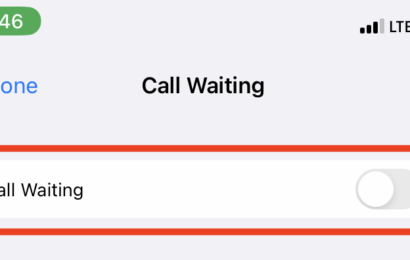OBS RAM
Contents
OBS Studio is one of the most popular screencasting and livestreaming programs. It’s free, open-source, and compatible with all major computer operating systems: Mac. Windows and Linux. OBS supports both offline recording and livestreaming through Twitch, Youtube, Facebook Live, Twitter, and even your own custom server.
A common problem cited by many OBS Studio users is its RAM usage. As a video processing program, OBS Studio requires a good chunk of RAM to function properly. Since users might be livestreaming something like a video game, which also needs a lot of RAM to run properly, a RAM overload is bound to happen on a computer with low RAM or many programs running simultaneously.
How does RAM affect OBS?
All programs need RAM to function. RAM is the short-term memory of your computer. It allows for quicker access to data than the hard disk.
Let’s say for example you are typing a word document on your computer. The entire document is loaded into your RAM. The more letters you type into the document, the more RAM it takes up. RAM is measured in bytes, where a byte is the amount of storage space taken up by a single character.
If your word document is 1,000 words long for instance, then its storage space is measured by the number of characters. A 1,000-word document would have approximately 5,000 characters (individual letters in each word, numbers, punctuation marks, spaces, and special formatting options like bolding, italicizing, and headers). 5,000 characters occupy 5,000 bytes (5KB, 0.005 MB). RAM in modern computers is measured in gigabytes (one billion bytes). That’s why text documents take up very little space and will never crash your RAM.
Video is a different animal. A video file is simply a collection of fast-moving pictures with an accompanying audio track. Showing those pictures in quick succession is what creates the illusion of motion. The rate is measured in frames per second (i.e. pictures per second). This rate can be anything from 24 fps to 60 fps.
Unlike text, whose size is determined by the character count, the amount of space occupied by a picture is determined by the pixel count. A pixel is a single dot of color. A single pixel takes up three bytes of space. The more closely spaced the pixels are, the more detailed the image is. Low-pixel images look blurry while high pixels ones look sharper.
An HD display, for example, has a resolution of 1920 by 1080p. That’s 1920 horizontal pixels and 1080 vertical pixels forming a rectangle enclosing over two million pixels. With every pixel requiring three bytes of space, that comes to six million bytes per image, around 6MB. Now, a 60 fps video would be adding 60 of these images (360 MB) to your RAM every second.
As this would require a RAM of around 21 GB per minute, modern computers only load a few seconds of video at a time onto the RAM while backing up the rest onto your hard disk. Loading and keeping the entire file in the RAM would be impractical and cause your computer to crash. Video is also compressed before transmission because the file size of the raw footage is often ridiculously large.
Factor in the encoding, rendering, and delivery instructions, the amount of RAM taken up by the audio track, plus any other programs your computer may be running at the same time, and you can understand why you need a lot of RAM for video processing programs. If you have too little RAM, your programs will run slowly and your computer may even crash.
OBS RAM usage: How much RAM is needed for OBS?
OBS requires at least 4GB of RAM. While there are cases of people running OBS on machines with 3GB of RAM, 4GB is recommended for smooth functioning.
However, you should keep other programs in mind. While having Chrome tabs open in the background won’t affect OBS’s functionality much, a RAM-intensive program like a video game will. So if you want to live-stream your gameplay, you will need a lot more than 4GB of RAM.
What should you do when you encounter performance issues on OBS?
- Check your system specifications
Several issues on OBS arise from your system not being powerful enough to handle the program. Your processor might be too weak or too slow. Your RAM may not be enough or your graphics card may not be up to scratch.
OBS minimum system requirements:
- 64-bit OS (Windows 8.1+ or Mac OS 10.3+)
- At least 4GB of RAM
- A core i5 processor or higher
- At least 500 MB of free disk space
- Direct X 10 capable graphics card
- Check your CPU, RAM, and disk usage rates
You can easily check this on task manager. If most of your RAM, disk, and CPU are being used (say 80%+), OBS might not run smoothly. Thus you will need to shut down the programs taking up the most RAM
- Tweak output settings
This is one of the easiest ways to cut down on RAM usage.
For starters, you do not need a 60 fps video. 24-30 fps is fast enough to create the illusion of fluid motion while taking up half the RAM a 60 fps video would require. Even broadcast TV uses 24-30 fps. Frame rates of 60 fps or higher are only ever used in situations with a lot of movement. Think of races or rattlesnake strikes.
Formula 1 races are, for example, broadcast at 25 fps. The fastest streams are offered at 50 fps. While Formula 1 has high-speed cameras that can capture motion at around 1200 fps, these are only ever used for replays.
Another thing to adjust is your resolution. While 1920 x 1080p has become standard for livestreaming, you don’t need it for screencasting. 1280 x 720p is good enough for that. People can see your screen just as clearly at that resolution. It has the added benefit of requiring only half the RAM of full HD.
- Put your log through OBS’s log analyzer
This is for when all other fixes don’t work.
In OBS select Help > Log Files > Upload last Log File. Copy the URL and paste it to: https://obsproject.com/tools/analyzer#logURL
The program will parse through your logs, find the problems, and suggest fixes.
In OBS select Help > Log Files > Upload last Log File. Copy the URL and paste it here.
How does OBS’s RAM usage compare to the RAM usage of vMix, Wirecast, and SLOBS?
OBS has less stringent system requirements and lower RAM usage rates when compared to vMix, Wirecast, and Streamlabs OBS. OBS is also free to use, unlike vMix and Wirecast, both of which require a monthly subscription.
OBS RAM:





